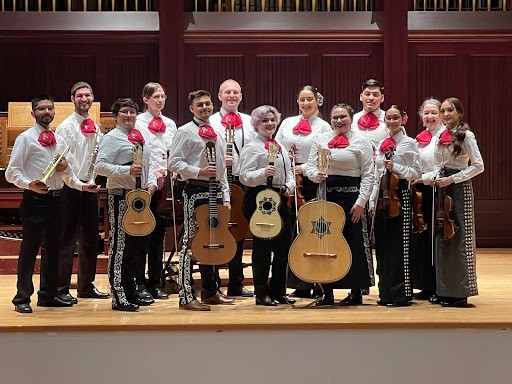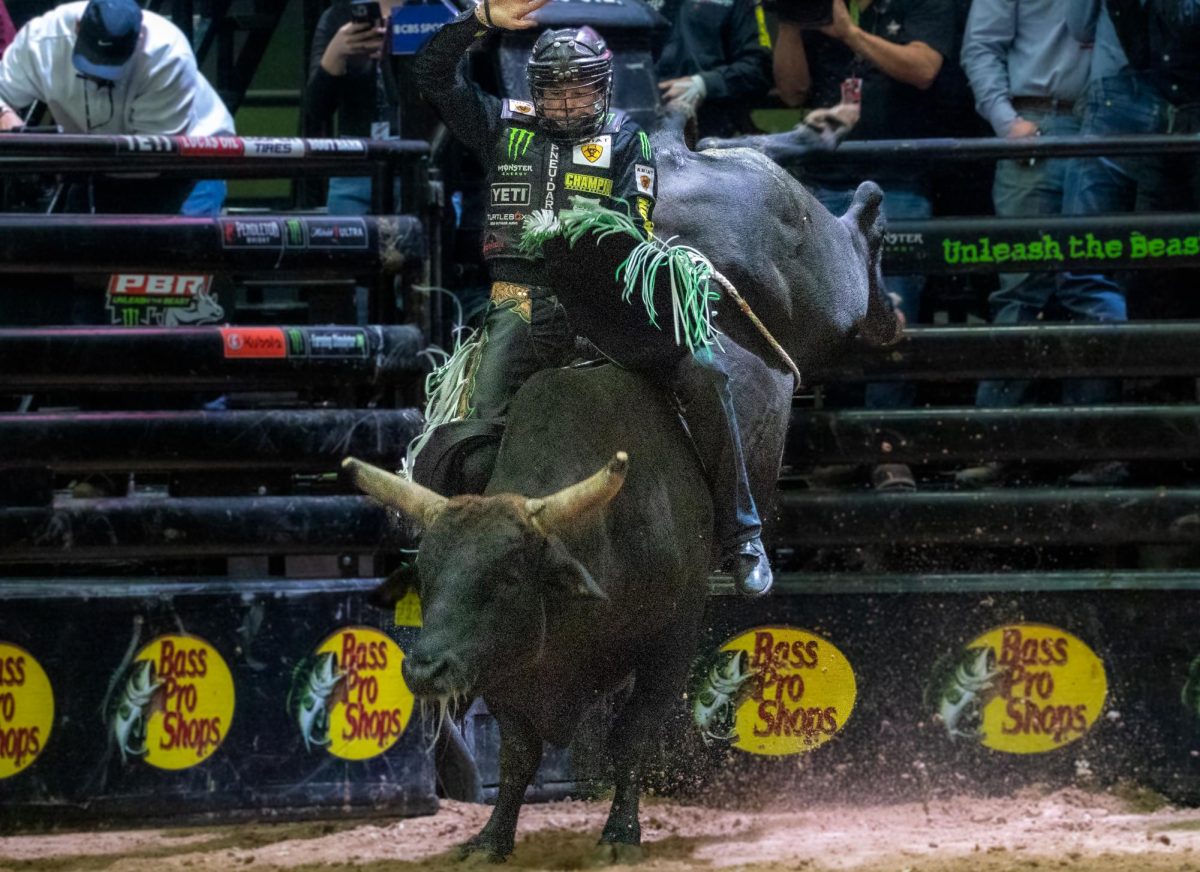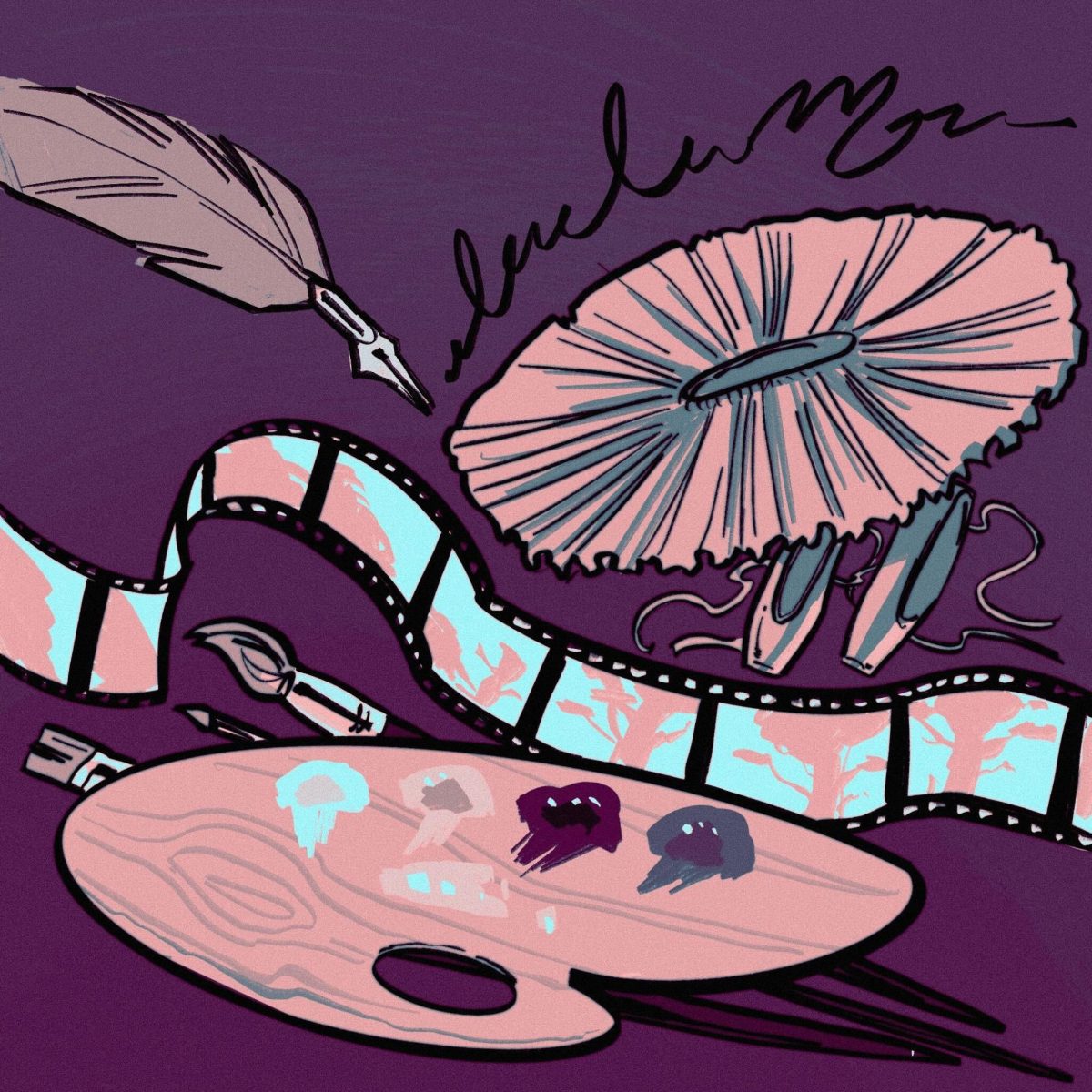Mariachi Arizona raises funds by performing and searching for donors to cover the cost of their uniforms. Mariachi trajes are expensive to afford, but they are an essential part of the mariachi experience.
Mariachi Arizona was founded in the early 90s as a class offered at the University of Arizona Fred Fox School of Music. The class is listed as music 400T for undergraduate students and music 500T for graduate students; this is a course available to students at the UA and Pima Community College students, faculty and staff, as well as community members who want to learn about mariachi history, culture and music making.
Tucson is considered the birthplace of the youth mariachi group movement. However, mariachi music can be traced back to having originated in the 19th century in the city of Cocula in Jalisco, Mexico.
“We have outstanding mariachi ensembles in the high schools and in the Tucson community and the school of music wants to ensure that students from those ensembles find an opportunity for a similar experience here as a continued pathway into college,” said Lori Wiest, director of Fred Fox School of Music.
RELATED: Barrio Viejo: Preserving one of Tucson’s oldest historic districts
The traditional mariachi traje is typically a three piece suit, which consists of a vest, jacket and a skirt or pants. Additionally, it goes with accessories such as a sombrero, ties, under shirt, boots and more. Due to so many parts that make up the traje it can be very expensive including the special embroidery or bottoms on the sides of the pants and jacket.
Maria Georgina Siqueiros, an UA senior student and member of Mariachi Arizona explained that Mariachi Arizona does not have an official uniform. Instead, members use the uniforms from former groups they were in. This year, one of the members donated ties for the ensembles.
“Or something that resembles a traje at least, our members who do not have a skirt or charro pants, we just wear regular black pants and white shirt,” Siqueiros said, who started playing the violin at the age of 12.
The Fred Fox School of Music helps Mariachi Arizona in booking performances like the President’s Tailgate for Homecoming in hopes of getting potential donors.
The cost of a quality traditional outfit is around $1,200 to $1,600 per person. Wiest said the goal is to raise funds for 35 outfits in a variety of sizes.
“In addition to the fundraising for performance outfits and gifts of instruments and donations, I would love to help expand their visibility as representatives of the University of Arizona and its community of people,” Wiest said.
RELATED: Around the Corner: Adaptogen Superfoods and medicinal mushrooms
Without an official uniform, Mariachi Arizona loses the essence of the experience in performances.
“People say to us, ‘you are the U of A, the U of A outfits the bands, the U of A outfits the theater, of course they would outfit you,’ but it’s not happening,” said Koreen Johannessen, a former UA employee at Campus Health, who has been part of Mariachi Arizona for 26 years.
Johannessen has looked for donors in the community and contacted foundations. She mentioned that people get irritated when asked for money because this class should be under a basic cost for the university system.
Back in the early 2000s, Johannessen said, the UA administration authorized a full mariachi traje plus the sombreros to members of the band. The trajes were put in storage over a summer and got lost. Since then, there has not been an official uniform for Mariachi Arizona.
Mariachi Arizona Director Alberto Ranjel said that donations of the appropriate instruments or monetary gifts to purchase instruments help to assist limited resources. There are also opportunities like the Tucson International Mariachi Conference to raise money to supplement the funds provided by the School of Music.
The Tucson International Mariachi Conference is a three-day conference that provides mariachi and baile folklorico workshops, concerts and a daylong Fiesta de Garibaldi. Members from important groups such as Mariachi Sol de Mexico and Mariachi Vargas come to teach at this conference.
“It’s a beautiful thing to see musicians of all ages with the same passion for mariachi that you have,” Siqueiros said.
RELATED: UAMA’s Art of Food exhibition: Starting conversations about awareness and disconnect
This conference carries a lot of history, beginning with Los Changuitos Feos in 1964, which put Tucson on the international map for its cultivation of young mariachi talent. Additionally, they contributed to the new generation of Mexican Americans who want to keep the mariachi tradition alive in Tucson.
Following his fathers footsteps, Ranjel and his brother joined Mariachi Juvenil Los Changuitos Feos when they were in elementary school.
Ranjel said mariachi music has had a tremendous impact on his life, allowing him to be able to travel, perform and explore the world.
“I hope that students gain not only technical skills on instruments and a slice of popular repertoire, but also learn the values of working as part of a team,” Ranjel said.
As part of the performance, mariachis do choreography while they are playing their instruments.
“Mariachi Arizona is not only the natural pipeline for the continuation of mariachi instruction, but is a representation of the Tucson and Southwestern United States community,” Ranjel said.
This fall semester, the class met every Wednesday evening from 6:30p.m. to 8:30 p.m. at the School of Music in room 106.
Potential future students can contact Ranjel directly for information about auditioning for the group.
Follow Vanessa Lucero on Twitter















